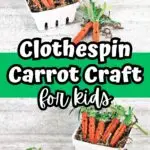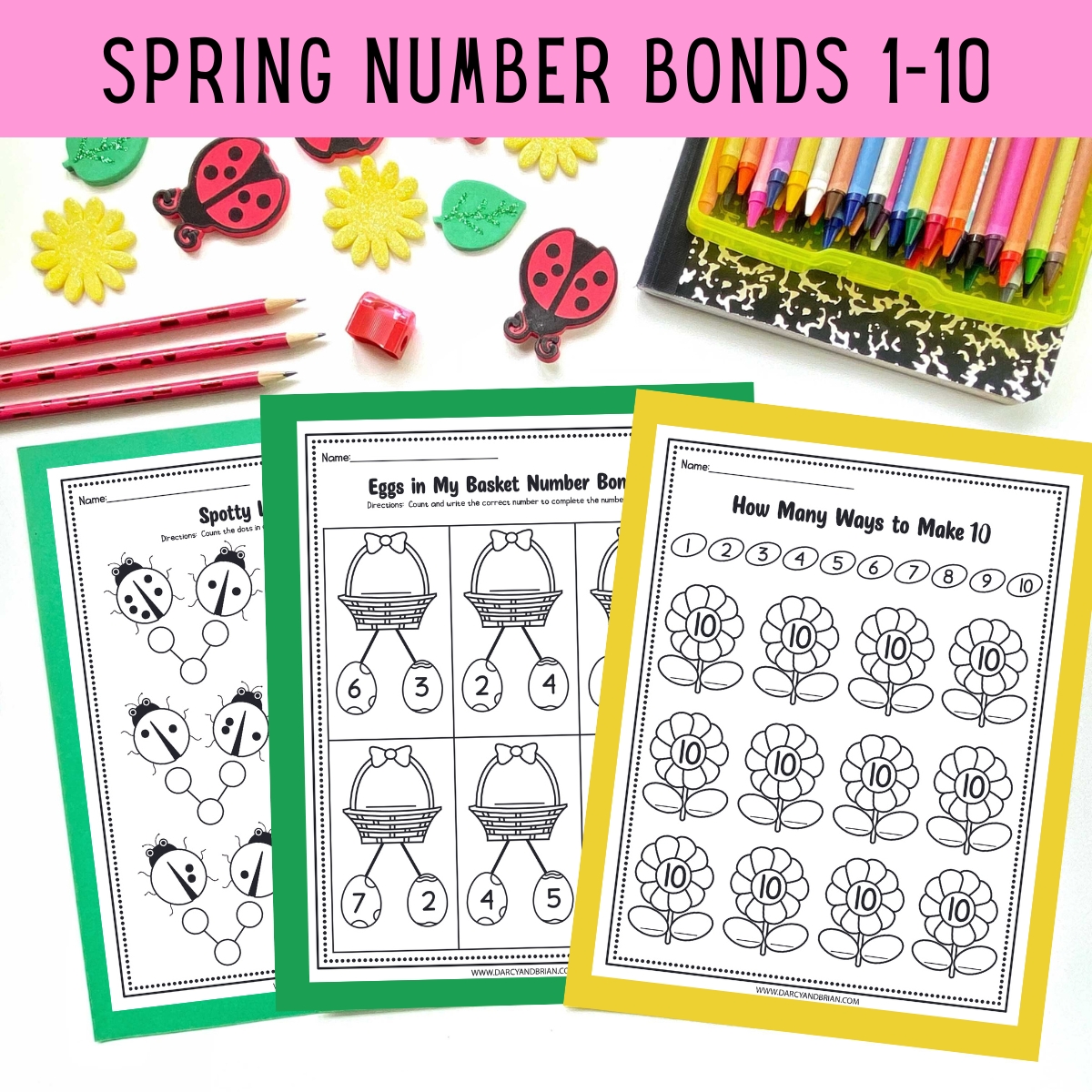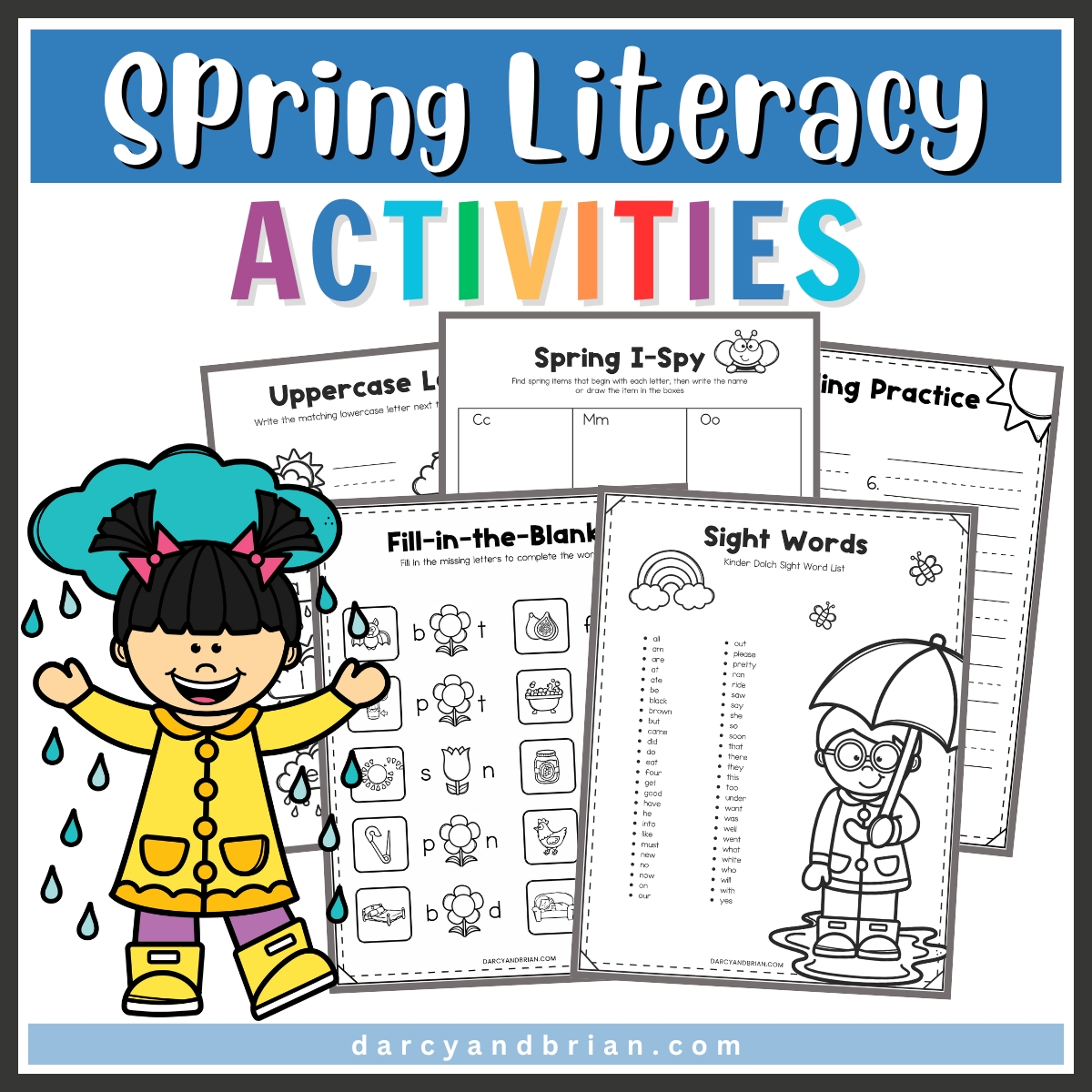Springtime brings a burst of vibrant colors and the perfect opportunity to engage in creativity. These clothespin carrots are adorable spring crafts for kids to make, adding a touch of seasonal charm to your home.
It’s a quick and easy project requiring few materials, making it simple to assemble. Children can create these fun decorations with just some clothespins and orange paint in no time. This craft encourages creativity and offers a delightful way to celebrate the arrival of spring.
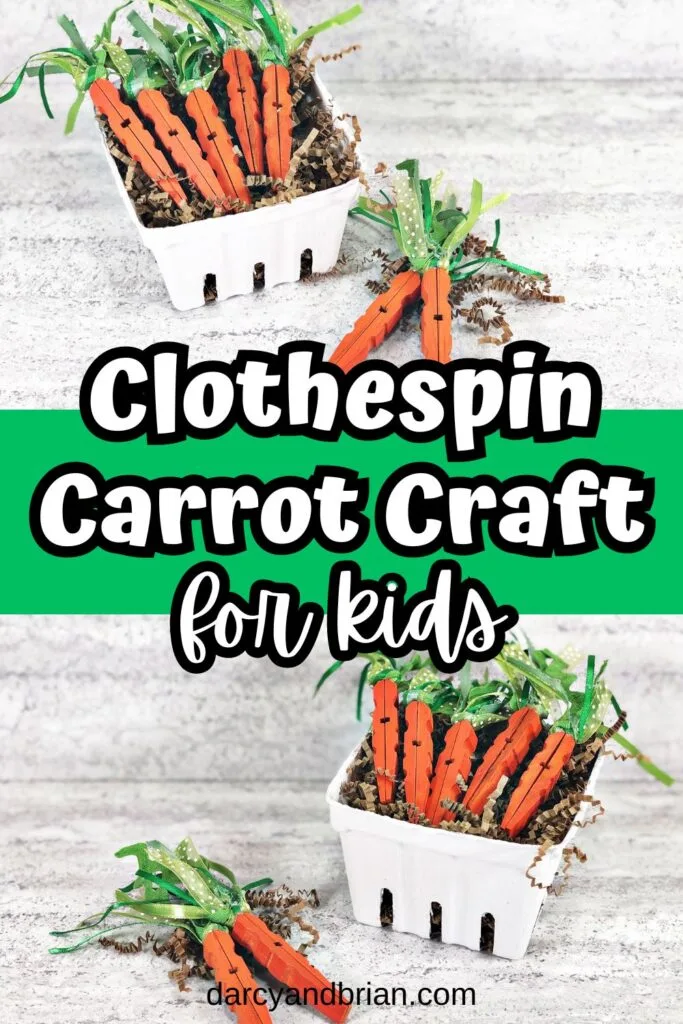
The transition from winter to spring is a magical time filled with renewal and growth. As the snow melts and temperatures rise, people begin to think of gardening, flowers blooming, and the arrival of baby animals, including bunnies.
This simple carrot craft perfectly embodies the season and pairs wonderfully with our Easter crafts for kids. Together, carrots and bunnies create a charming duo in seasonal decorations.
Developmental Benefits of Making Clothespin Carrots
Crafting clothespin carrots offers numerous benefits for children’s skill development. For example, this activity provides an excellent opportunity to enhance fine motor skills as kids paint the clothespins and glue various components together.
Additionally, following directions to create the carrots helps improve their ability to follow a sequence of steps and boosts their confidence in completing tasks.
Using a ruler to measure the ribbon for the carrot tops also allows children to practice their measuring skills, a fundamental aspect of early math education.
Plus, this project can serve as a conversational gateway for discussing vegetables, the essential nutrients they provide, and how carrots grow, enriching their knowledge of the natural world.
Spring Dot Marker Activity Pages Spring Number Bond 1-10 Worksheets
Spring Number Bond 1-10 Worksheets Spring Literacy Activity Pack
Spring Literacy Activity Pack
Cute Clothespin Crafts for Kids
Clothespins are a fantastic and easily accessible supply that can ignite a child’s creativity. These humble everyday items can be transformed into various imaginative creations, such as little puppets for storytelling and play.
Pinching and manipulating clothespins is excellent for developing fine motor skills, making the process as beneficial as it is fun.
With just a few additional materials like paint, markers, and fabric, the possibilities for crafting with laundry clips are virtually endless. This provides hours of engaging and educational entertainment for kids.
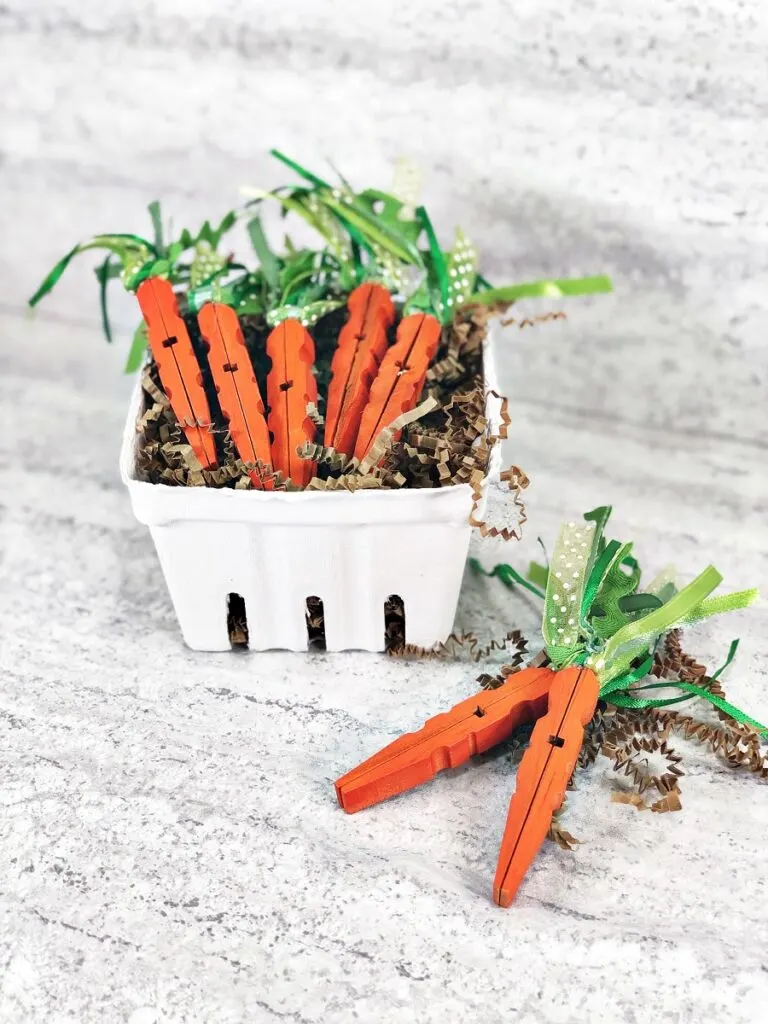
This post contains affiliate links. As an Amazon Associate and a participant in other affiliate programs, we earn a commission on qualifying purchases.
Shop some of my favorite craft supplies on Amazon!
Clothespin Carrot Craft Supplies
You’ll need wooden clothespins with springs, which are easy to find at craft and dollar stores. You can also create a modified version of this carrot using round peg-style laundry pins.
Gather orange paint—we recommend Apple Barrel acrylic paint for its vibrant colors and quick drying time. For the tops, you’ll need green ribbons or yarn.
To assemble, we suggest using a low-temperature glue gun. Don’t forget to use a silicone craft mat to protect your workspace and ensure easy cleanup.
How to Make Clothespin Carrots
Begin by preparing the clothespins. If working with young children, I recommend disassembling them beforehand. Older children can help by removing the metal springs from the wooden clothespins.
Next, glue two clothespin halves back-to-back using a hot glue gun. While liquid craft glue is an alternative, be mindful of the drying time required.
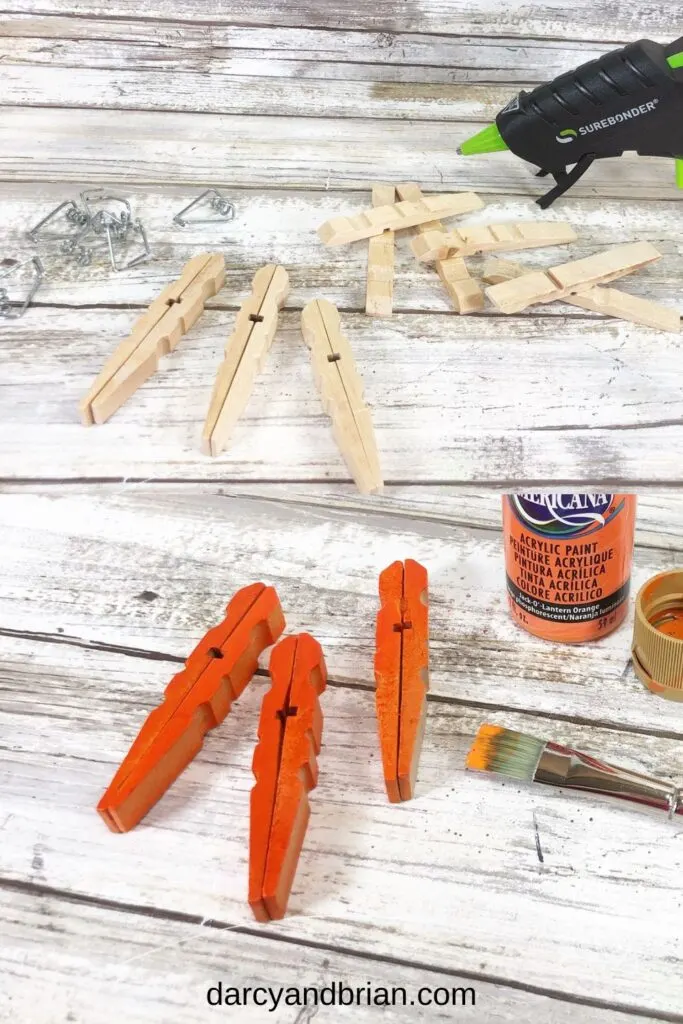
Paint the wooden clothespins completely orange. Allow them to dry, and apply a second coat if necessary. To add visual interest, use various shades of orange and even paint some purple to reflect the diversity of carrot colors.
Using a ruler and scissors, measure and cut six-inch lengths of assorted green ribbons or yarn. Mix colors, patterns, and textures for a fun and eclectic look. This project is an excellent opportunity to use up scrap materials.
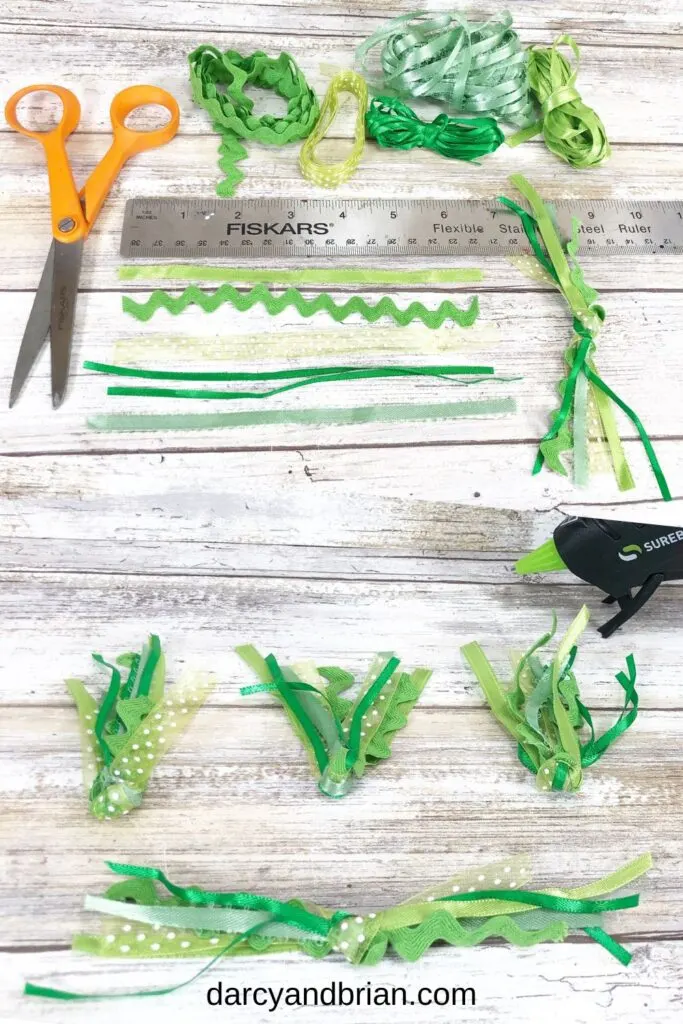
Gather five to six strips of ribbon or lengths of yarn. Tie them together with a knot at the center. Then, apply a dab of hot glue to the top of the knot to keep the leaves from flopping around. If you don’t have ribbon or yarn, strips of green felt can be used instead.
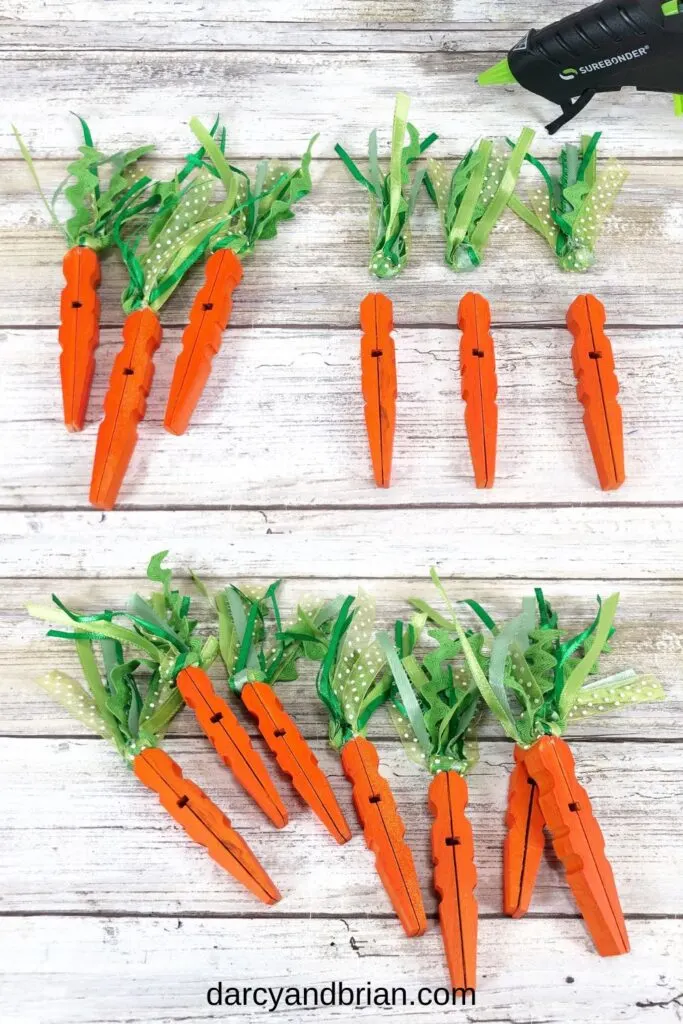
Finally, use a hot glue gun to attach the green ribbon leaves to the tops of the clothespin carrots. Press the ribbons and clothespins together firmly until the glue has completely cooled. As you progress through each step, discuss the different parts of a carrot.
Can I Make This Project Without Hot Glue?
We recommend using hot glue to assemble this craft project because it dries quickly and adheres the pieces together nicely. However, if you are doing this project with young children, you may want to consider an alternative adhesive for safety reasons.
You can teach elementary school-aged children how to safely use a low-temperature glue gun and supervise them as they do so.
A strong bonding adhesive, such as Aleene’s Tacky Craft Glue, is also a great alternative. Although it will take longer to complete the project as you wait for the glue to dry, it works well for many crafting needs and is a safer option for younger children.
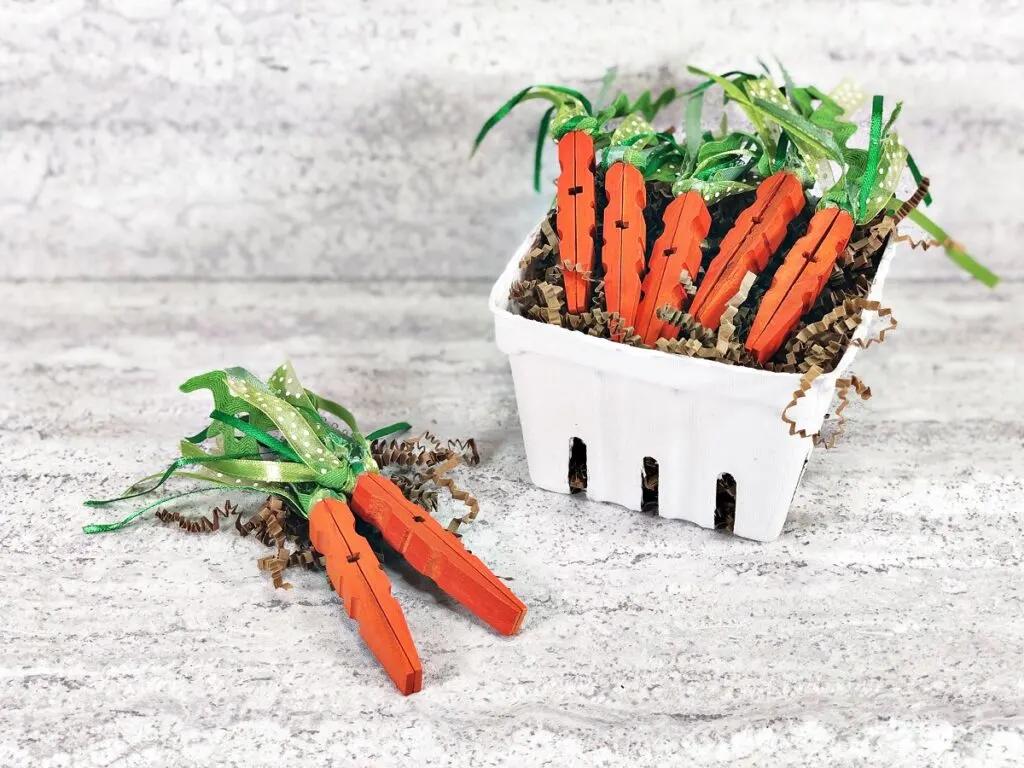
Tips For Using the Completed Carrots
There are plenty of creative ways to showcase your finished carrots. Consider making our paper cup bunny craft. With the cup opening at the top, you can fill it with clothespin carrots, creating an adorable springtime display.
Add an educational twist by turning it into a counting game for children. This helps them practice their numbers as they add and remove the carrots.
Alternatively, incorporate the carrots into your spring and Easter decorations by placing them in a decorative basket for a lovely centerpiece.
Another fun idea is to attach the carrots to twine to create a festive banner. You could also transform them into cute fridge magnets, bringing a touch of spring every time you visit the kitchen.
Children’s Books About Carrots
Reading stories together and doing related craft projects is a fantastic way to engage children in learning. This hands-on approach ignites their imagination and reinforces the themes discussed in the books.
Integrating the clothespin carrot craft into a lesson plan about spring or vegetables makes the learning experience more dynamic and memorable.
“The Carrot Seed” by Ruth Krauss: This classic tale is about a young boy who plants a carrot seed and patiently waits for it to grow. Despite doubts from others, he believes in his tiny seed, highlighting the importance of patience and perseverance.
“Carrot Soup” by John Segal: Rabbit loves carrot soup and plans to harvest his carrots to make a big pot of it. However, when he collects his carrots, they are all missing! Rabbit’s friends come to the rescue, teaching them about friendship and teamwork.
“Creepy Carrots!” by Aaron Reynolds: A humorous and slightly spooky story about Jasper Rabbit, who loves eating carrots a bit too much. The carrots have had enough and take matters into their own hands.
The Carrot Seed Board Book: 75th Anniversary Carrot Soup
Carrot Soup Creepy Carrots! (Creepy Tales!)
Creepy Carrots! (Creepy Tales!) Too Many Carrots
Too Many Carrots Tops & Bottoms (Caldecott Honor Book)
Tops & Bottoms (Caldecott Honor Book)
“The Enormous Carrot” by Vladimir Vagin: Inspired by the classic Russian folk tale, this story is about growing a carrot so big that it takes the help of many friends to pull it out of the ground. It teaches children about cooperation and the joys of working together.
“Too Many Carrots” by Katy Hudson: In this charming story, Rabbit loves carrots so much that he can’t stop collecting them, filling his house until there’s no room left. The book is fun and has an underlying message about sharing and decluttering.
“Tops and Bottoms” by Janet Stevens: This witty story tells the tale of a clever hare who strikes a deal with a lazy bear to tend his land. When the hare plants carrots, he outsmarts the bear by keeping the nutritious roots underground, teaching children about resourcefulness and the rewards of hard work.
Fun Spring Craft Ideas for Kids
Embrace the vibrant colors and seasonal themes with crafts incorporating elements of nature, seasonal holidays, and everyday objects around the house. These spring craft projects can be tailored to various age groups, ensuring every child can enjoy the fun.
- Tissue Paper Easter Bunny Craft
- Paper Mosaic Flower
- Torn Paper Shamrock Craft
- Popsicle Stick Carrot Craft
- Coffee Filter Umbrella Craft
Creating carrot clothespin crafts is a delightful way to spend quality time with children while fostering their creativity and fine motor skills. It’s an excellent opportunity to discuss the parts of a carrot, integrate book themes, and create spring decorations.
We hope you and your little ones enjoy making these charming crafts as much as we do. For more fun and engaging craft ideas and kids’ activity inspiration, don’t forget to join our email newsletter!
Receive daily updates, tips, and exclusive content straight to your inbox—ignite your creative spark and make every day a crafting adventure.
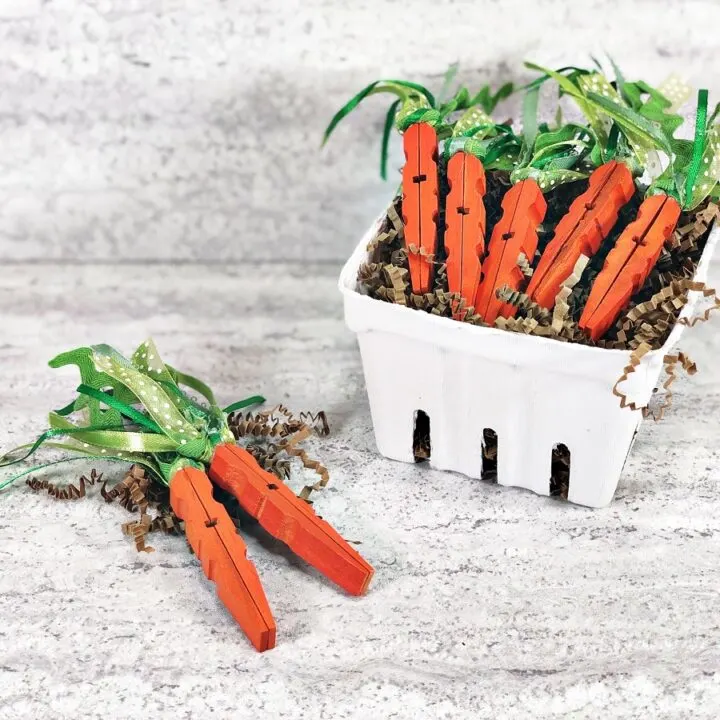
Clothespin Carrot Craft
Fun and simple DIY clothespin carrot craft for kids! Perfect for home or classroom spring activities.
Materials
- Wooden Clothespins With Springs
- Orange Craft Paint
- Green Ribbon or Yarn
Tools
- Low Temp Glue Gun and Glue Sticks
- Paintbrush
- Scissors
- Ruler
Instructions
- Take apart the clothespins by removing the springs.
- Glue two clothespin halves together back-to-back using a glue gun or tacky craft glue.
- Paint all sides of the clothespins orange. Allow to dry and add another coat as needed.
- Measure and cut six-inch lengths of assorted green ribbon or yarn.
- Gather five to six strips of ribbon or lengths of yarn per carrot. Tie them in a knot at the center. Apply a small amount of hot glue at the top of the knot and press the ribbon ends together to keep them from flopping around.
- Lastly, attach the green ribbon leaves to the top of the clothespin carrots. Hold the ribbons and clothespins together tightly until the glue cools completely.
Recommended Products
As an Amazon Associate and member of other affiliate programs, I earn from qualifying purchases.

Darcy is the founder of “Life With Darcy and Brian,” where she combines her love for education, board games, and crafting to create engaging learning experiences for kids. Her creative projects and writing have been featured in outlets like The Toy Insider, CafeMom, Mom.com, Parents.com, Country Living, and The Pioneer Woman.

